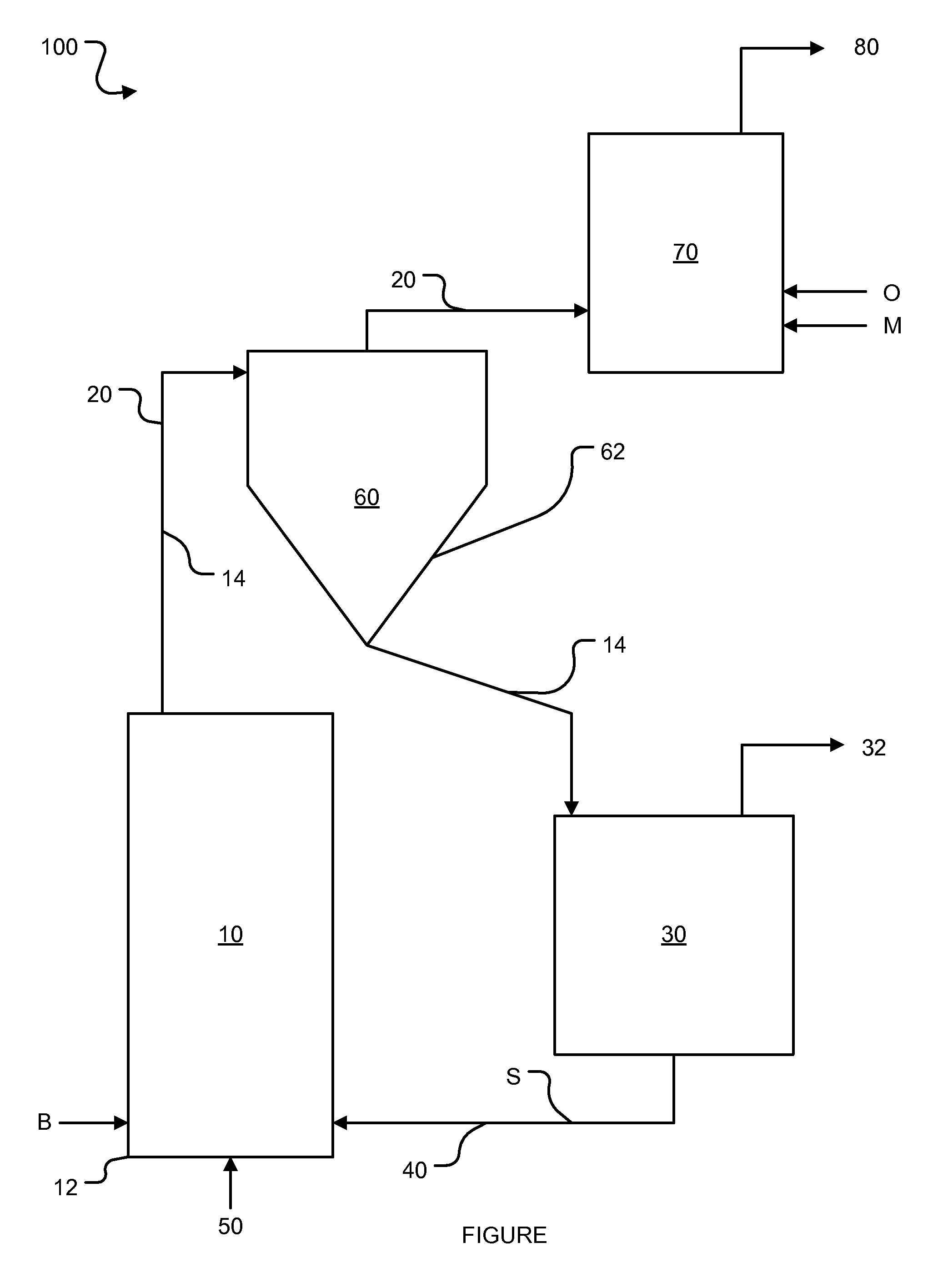Systems and methods for oxidation of synthesis gas tar
a technology of synthesis gas and oxidation method, which is applied in the direction of combustible gas purification/modification, furnaces, muffle furnaces, etc., can solve the problems that the current tar removal technology does not meet the needs of the industry in terms of cost, performance, environmental considerations, etc., and achieves the effect of improving properties
- Summary
- Abstract
- Description
- Claims
- Application Information
AI Technical Summary
Benefits of technology
Problems solved by technology
Method used
Image
Examples
example 1
[0052]Partial Oxidation of a Product Gas. A number of simulations have been performed based on equilibrium calculations to examine the ability of the systems and methods of the present invention to achieve the high levels of tar destruction required for many applications. The results are summarized in Tables 1-3. Because of the very high rates of reaction and the high temperatures involved, it is expected that chemical equilibrium will be achieved. Another issue for successful tar destruction, the rapid and thorough mixing of injected O2 with the product gas, will be achieved by the means summarized, supra, including a more fluid dynamic modeling. Establishing a desirable fluid dynamic modeling for a particular facility may be achieved using techniques known in the art.
[0053]Table 1 shows the results of a representative equilibrium calculation using the tar constituents in a typical Silva Gas product gas, which is produced in the Silva Gas Gasification Plant in Burlington, Vt., with...
example 2
[0055]Partial Oxidation of a Hydrocarbon-Rich Gas Containing Toluene. Table 2 shows the results of a representative equilibrium calculation using gas mixtures containing only one tar species. A software program based on minimizing the Gibbs free energy was used to compute equilibrium compositions of reacting gas mixtures as well as the heat balance, assuming the system is adiabatic. The software enabled examination of factors, such as gas compositions, temperatures, oxygen consumption, and potential loss of energy in the product gas. Programs similar to the one used by the inventor are widely known in the art, for example as a component in the well known chemical design program ChemCad.
[0056]In the particular example, the only tar species in the input reacting gas mixture was toluene, which was used as a tar surrogate. The reactant gas composition was taken directly from the heat and material balance model at 25% moisture and default values for the other parameters. The gas composit...
PUM
 Login to View More
Login to View More Abstract
Description
Claims
Application Information
 Login to View More
Login to View More - R&D
- Intellectual Property
- Life Sciences
- Materials
- Tech Scout
- Unparalleled Data Quality
- Higher Quality Content
- 60% Fewer Hallucinations
Browse by: Latest US Patents, China's latest patents, Technical Efficacy Thesaurus, Application Domain, Technology Topic, Popular Technical Reports.
© 2025 PatSnap. All rights reserved.Legal|Privacy policy|Modern Slavery Act Transparency Statement|Sitemap|About US| Contact US: help@patsnap.com


